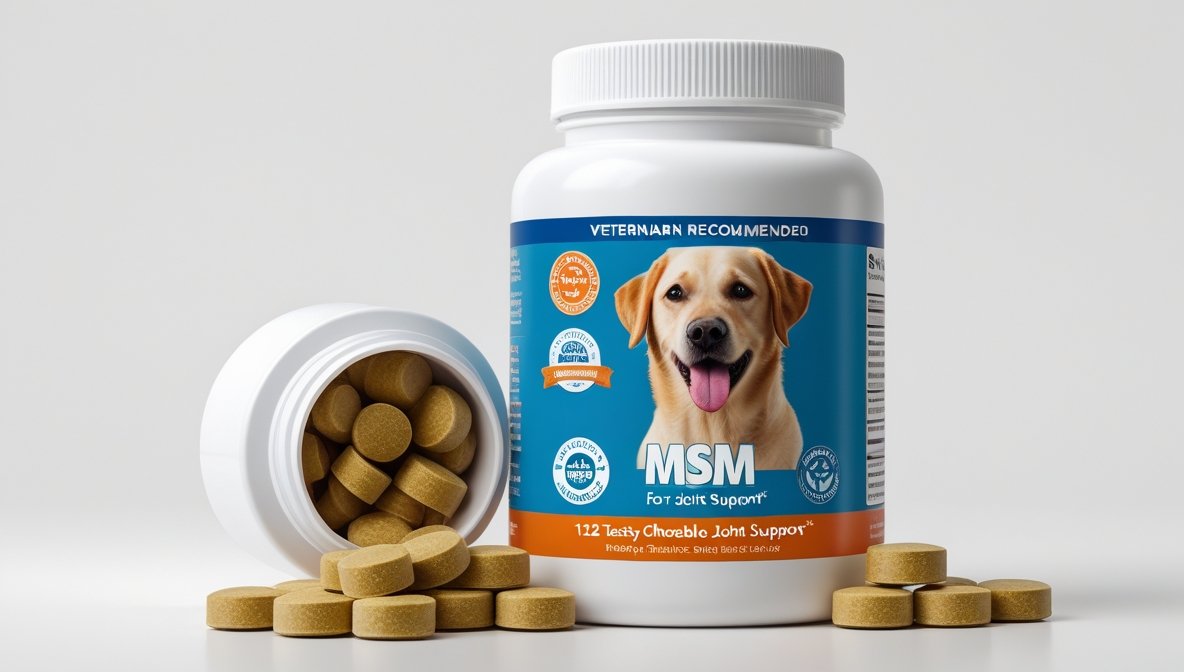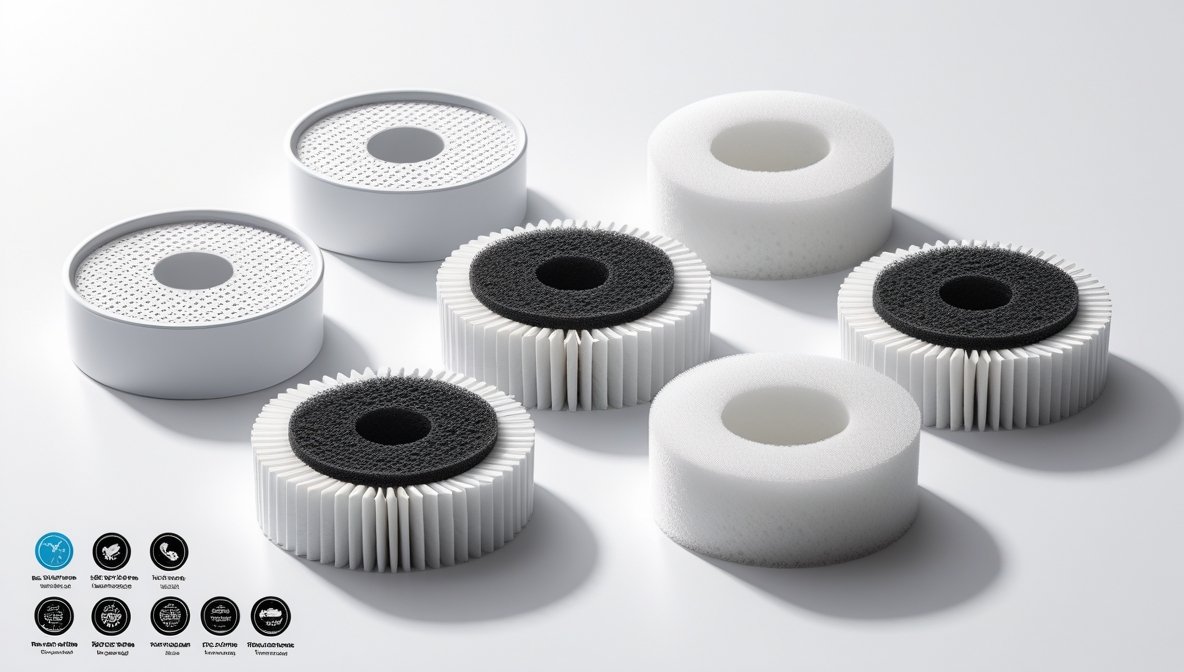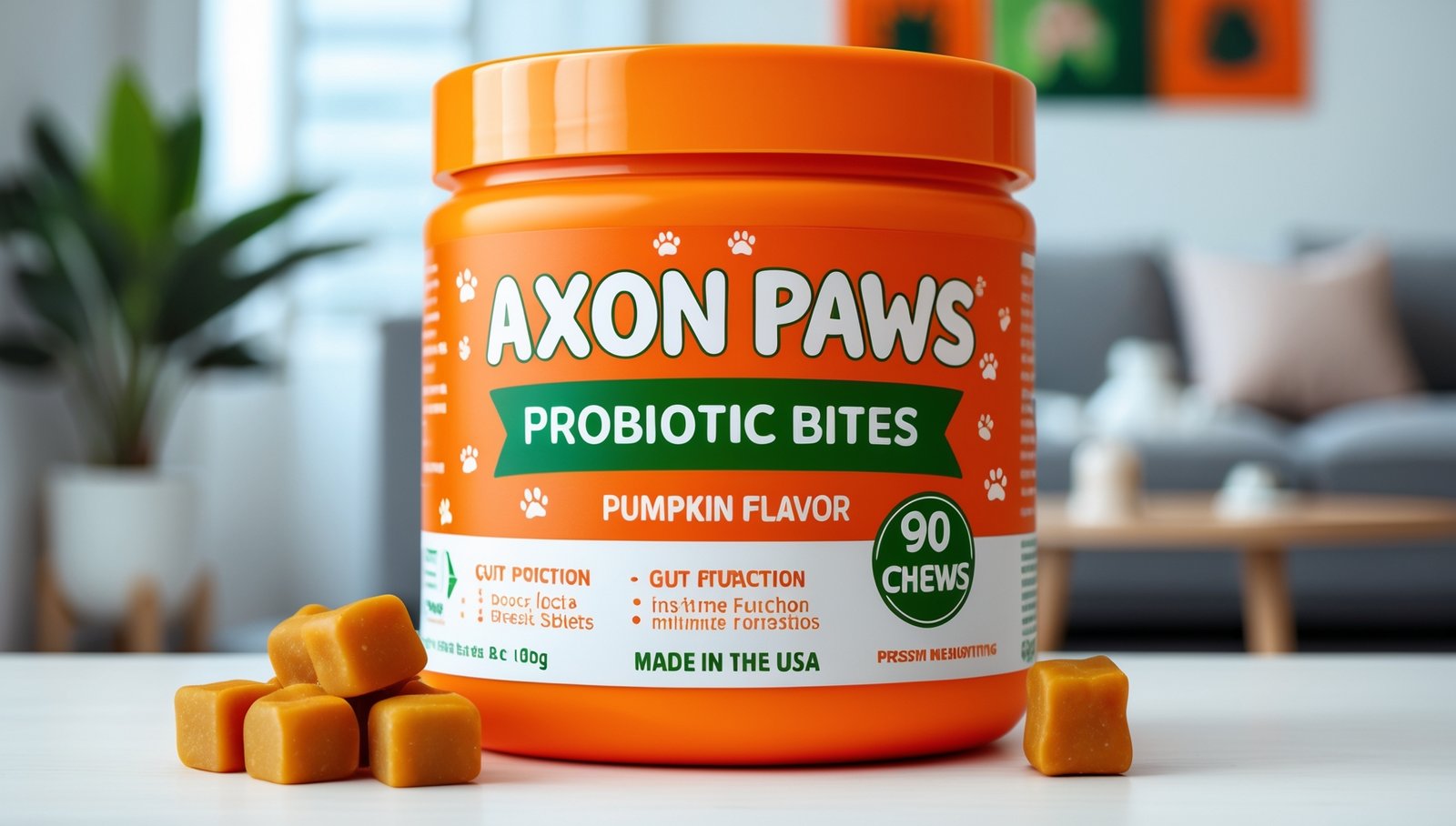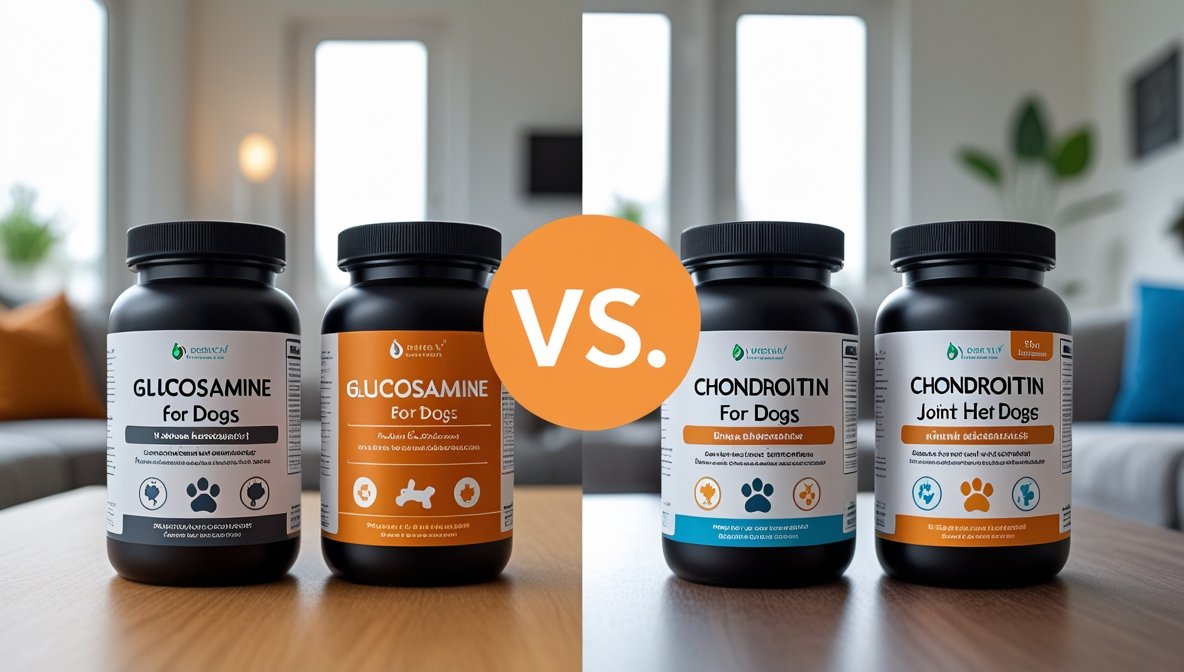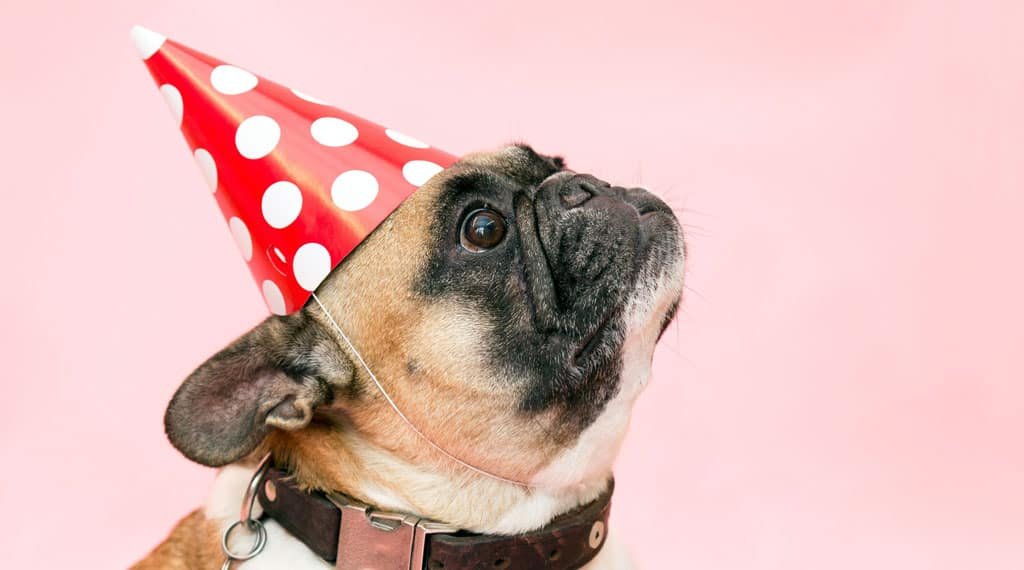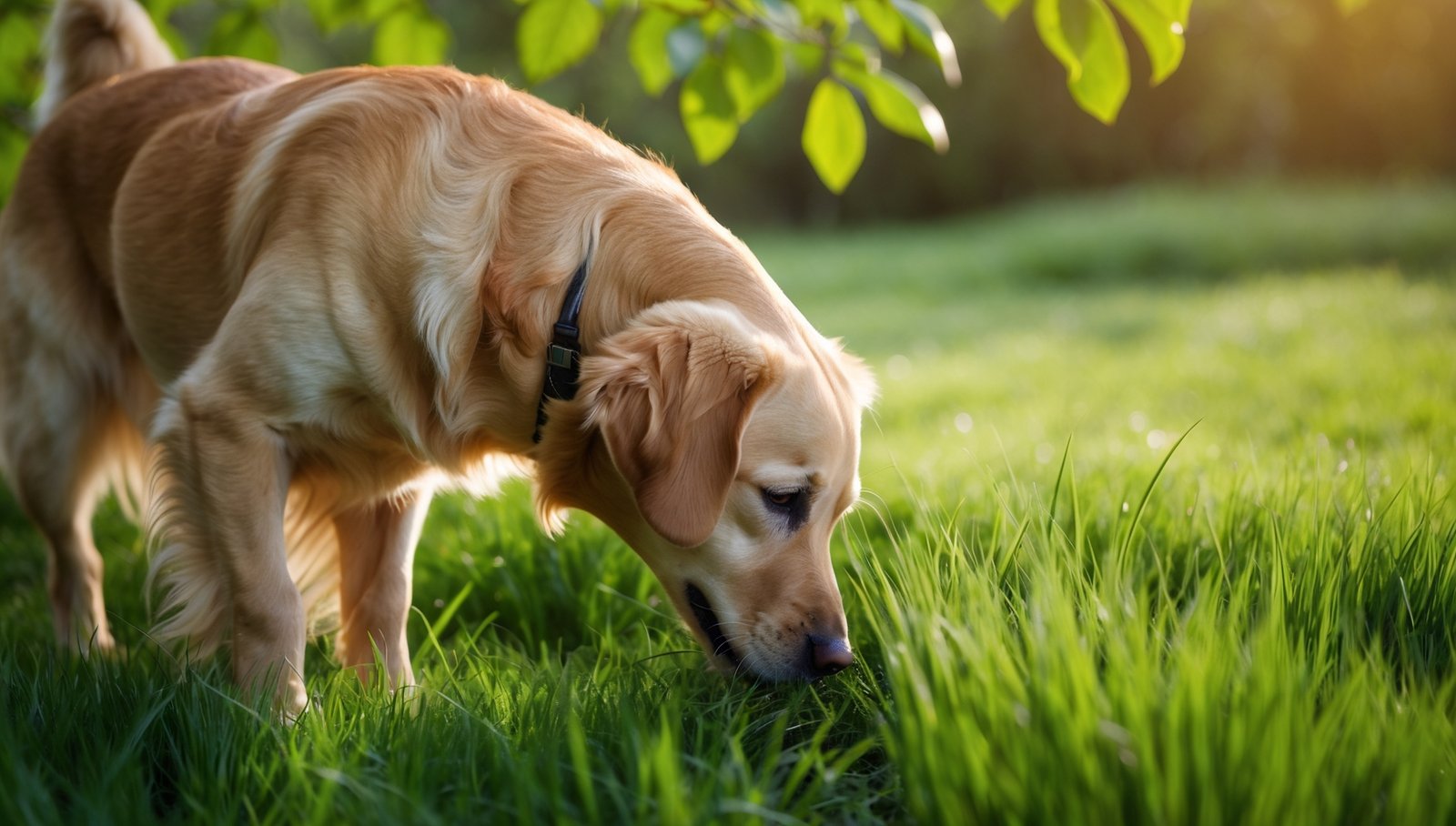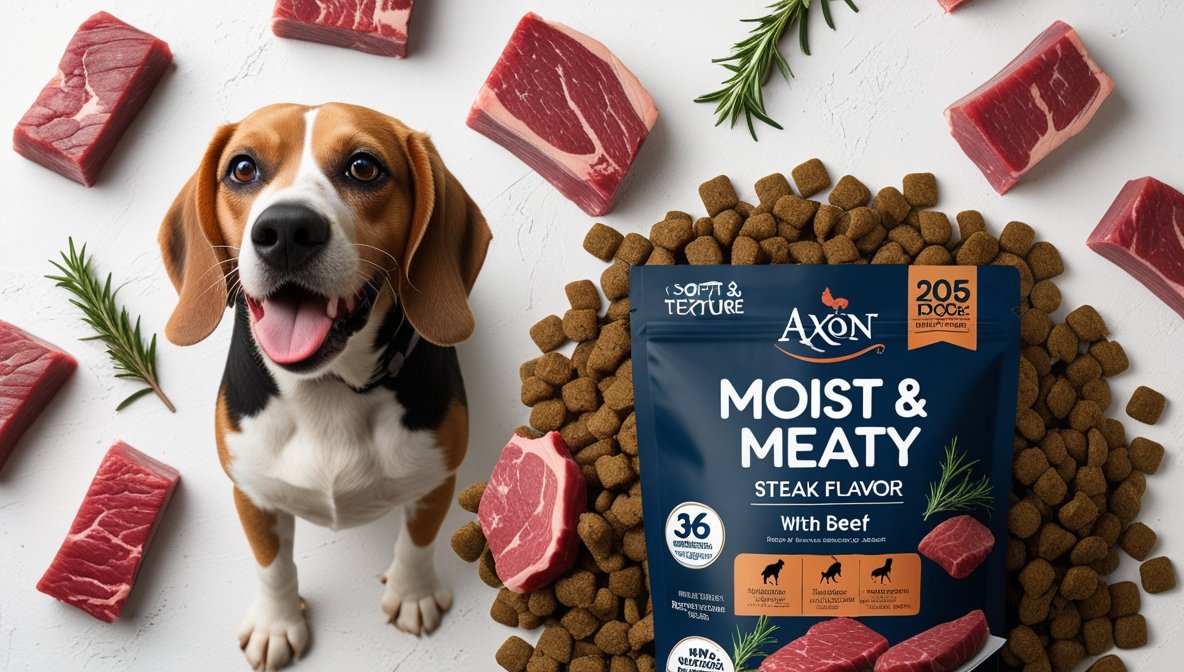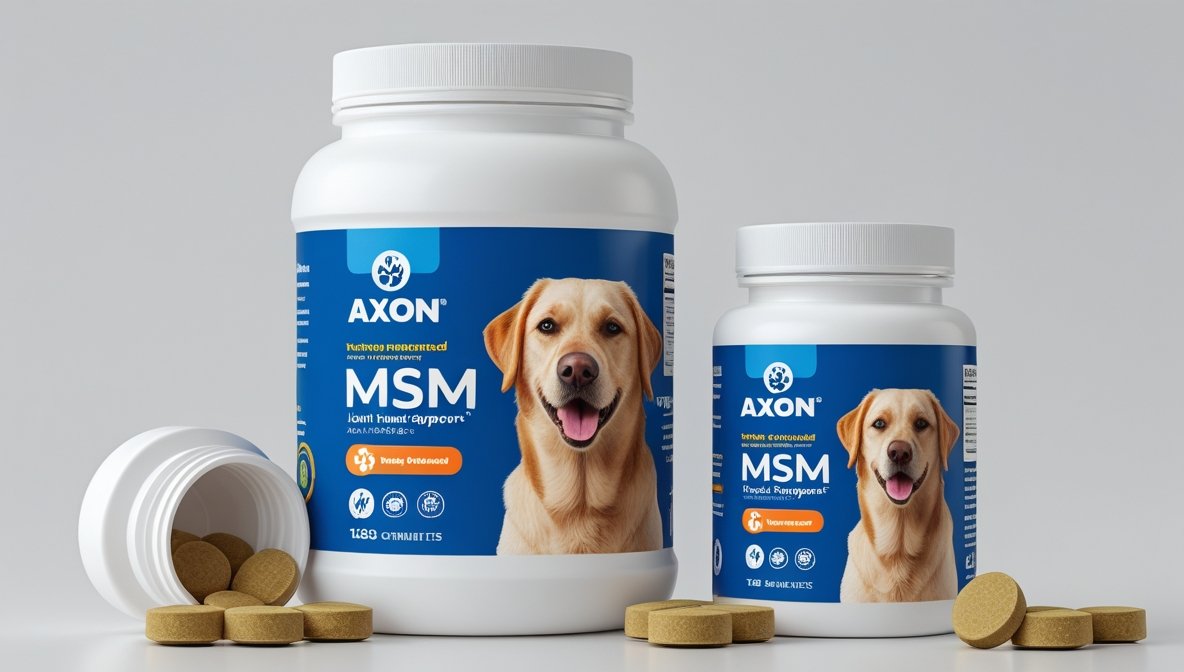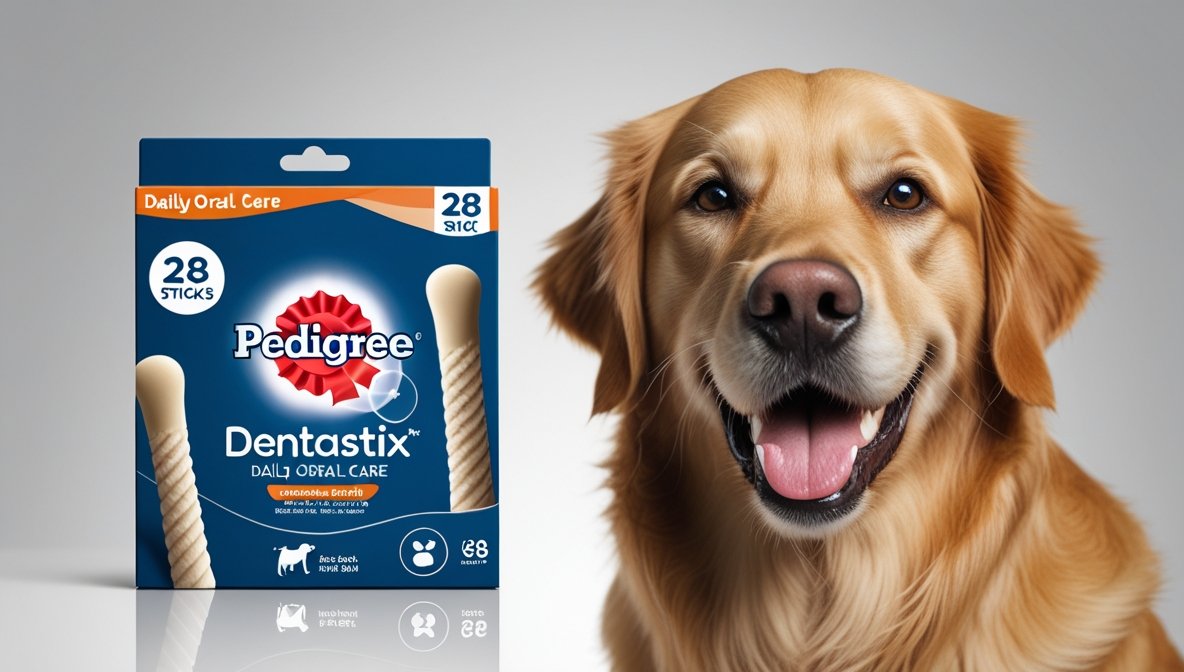Choosing the best grass for dogs is essential for any pet owner who wants a lush, green lawn that can withstand pets’ wear and tear. Not all turf varieties tolerate dog paws, digging, and urine alike. This guide explores the top dog-friendly grasses (cool-season and warm-season) used in the USA, highlighting species that recover quickly, resist urine burn, and stay soft for pets. We’ll cover key factors – durability, recovery, softness, shade/drought tolerance – and list recommended grasses like Kentucky bluegrass, tall fescue, perennial rye, bermudagrass, zoysia, centipede, St. Augustine (Citrablue), and even artificial turf options. Along the way, we’ll offer lawn-care tips (watering, mowing, pee-spot repair) and FAQs for dog owners. By the end, you’ll know which turf to plant (or sod) so your lawn stays beautiful and pet-safe even with active dogs best grass for dogs.
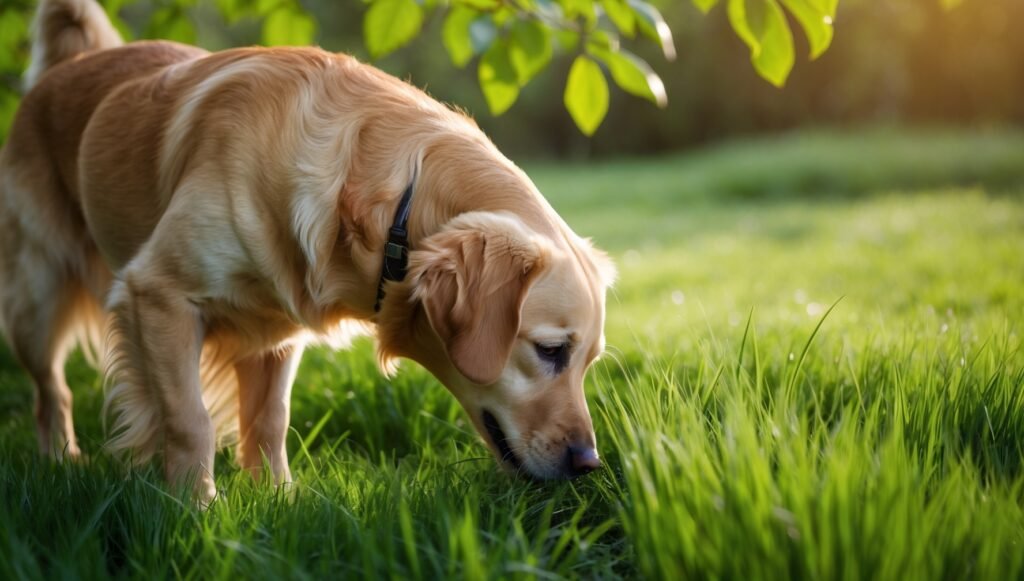
Dogs love to romp on the yard, but high foot traffic and frequent bathroom breaks can quickly turn a fine lawn into a patchy mess. The perfect dog-friendly grass has deep, spreading roots and the ability to heal itself, so holes and urine spots disappear fast. It should be soft on paws (many dogs like rolling in the grass), low-to-the-ground (to avoid trampolining near pools), and quick-growing for easy self-repair. Crucially, it must tolerate nitrogen from dog urine without turning yellow. In colder climates, cool-season grasses (e.g. Kentucky bluegrass, fescues, perennial rye) excel, while in warm southern states, warm-season grasses (bermuda, zoysia, centipede, St. Augustine, etc.) prevail. We’ll also touch on specialty seed mixes (“pet-friendly” blends) and even artificial turf, so you have all options covered best grass for dogs.
Dogs and kids often share the same backyard, so durability and safety go hand in hand. According to lawn experts, the best grasses for heavy foot/paw traffic have vigorous growth habits that fill in worn spots. Grasses that spread via rhizomes or stolons (like Kentucky bluegrass or bermudagrass) can self-repair, while bunch-type grasses (like tall fescue) require overseeding to fix holes. Deep root systems help grasses survive dog-digging and drought, and dense blades block urine from reaching soil. We’ll see how each grass measures up on these criteria best grass for dogs.
Table of Contents
Why Dog-Friendly Grass Matters
Every dog owner has seen the damage: brown spots from urine, thinning lawn from heavy play, muddy depressions where dogs dig. Using the right grass type is the first defense. Durability under heavy use is key – grasses with deep, well-anchored roots and spreading growth habit tolerate pets best. For example, Kentucky bluegrass spreads via underground stems (rhizomes) that help it bounce back quickly. In contrast, tall fescue grows in clumps and won’t heal patchy areas without reseeding. High foot-traffic tolerance means active dogs can run on the lawn without immediate damage best grass for dogs.
Another vital factor is urine resistance. Dog urine is high in nitrogen, which acts like a potent fertilizer burn and can kill grass. Some grasses, like perennial ryegrass, are known to stand up to urine better than others. Others cope indirectly – for instance, centipedegrass and zoysia grow so densely or require so much water that urine is diluted before it causes harm. No grass is completely immune, so lawn-care practices (watering after pets go, training pets to one area, overseeding damage) are also important best grass for dogs.
Finally, consider softness and safety. Grasses like Kentucky bluegrass and fescues have fine, soft blades that are comfortable underfoot (and paw). Pet owners should avoid grasses with sharp blades (some zoysia or bahia varieties can be coarse) if the dog enjoys rolling. Hypoallergenic options also exist: for very sensitive dogs (or allergic owners), certain turf like St. Augustine ‘Citrablue’ is noted for low pollen. We’ll detail these and more below best grass for dogs.
Dog-Friendly Grass Characteristics
- Deep Roots: Grasses with deep, extensive root systems (tall fescue, bermuda) withstand digging and drought better, keeping the lawn alive under stress.
- Spreading Habit: Rhizomatous or stoloniferous grasses (Kentucky bluegrass, bermudagrass, zoysia) naturally fill bare spots. If your lawn sees constant pet play, these self-repairing types help maintain turf density best grass for dogs.
- Fast Growth & Recovery: A turf that grows quickly can recover from damage sooner. Fast-germinating cool-season grasses like perennial ryegrass are often used to patch holes.
- Wear Tolerance: Tough grasses tolerate foot traffic without showing wear. Bermuda and buffalo grass, for instance, are extremely durable and stand up to heavy play.
- Urine Resistance: Look for species that dilute or disperse urine. High-water grasses (centipede) or dense-canopy grasses (zoysia) reduce spot burning best grass for dogs.
- Shade/Drought Tolerance: If your dog’s play area is shady or dry, choose accordingly. Tall fescue and zoysia handle shade and heat better than fine fescues or some bermudas.
- Soft Texture: For dogs who lounge, grasses with fine blades (bluegrass, fescues) feel nicer. Avoid very stiff, wiry grasses if possible best grass for dogs.
- Low Maintenance: Many pet owners prefer grass that isn’t finicky. Some centipede and buffalo varieties need minimal mowing or fertilizing best grass for dogs.
Each of the grasses below excels in some of these ways. The “best” choice depends on your region (cool vs. warm season), soil, shade, and your dog’s habits. We’ve broken our recommendations into cool-season and warm-season types best grass for dogs.
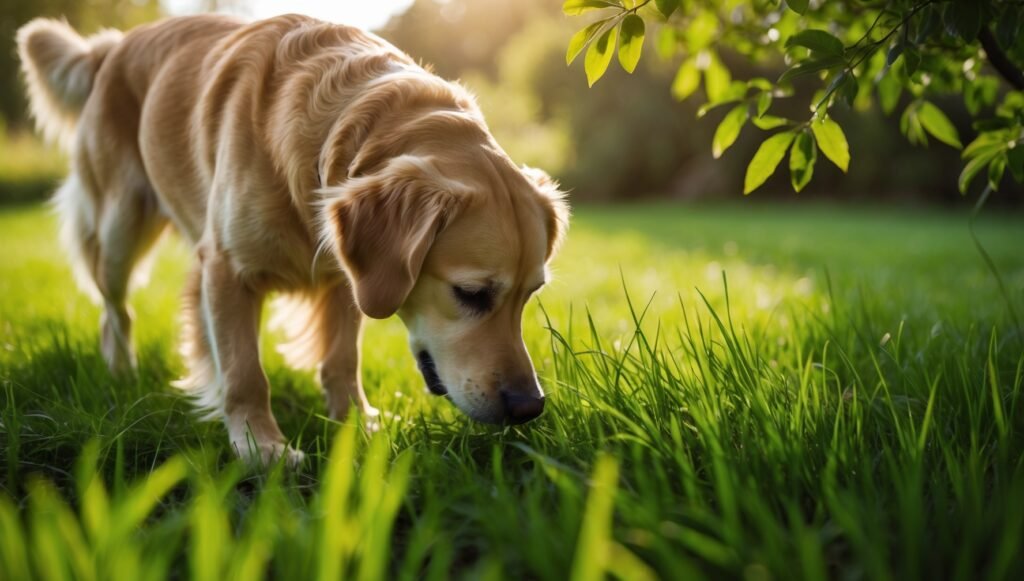
Cool-Season Grasses for Dogs
Cool-season lawns thrive in the northern U.S. and transitional zones, and are often used in yards where dogs live. The top dog-friendly cool-season grasses include Kentucky bluegrass, tall fescue, and perennial ryegrass. These grasses stay green in spring/fall and tolerate below-freezing winters. Below are the key cool-season picks:
- Kentucky Bluegrass (Poa pratensis): A classic cool-season turf, Kentucky bluegrass has a beautiful blue-green color and a soft, fine texture. It spreads via underground rhizomes, so it self-repairs patches caused by pets. It’s tough and can withstand energetic pups; in fact, Pennington notes that KBG’s aggressive spreading growth helps it resist wear and quickly recover. Once established, it fills in holes from heavy play. However, it does best in sun (not shaded spots) and requires regular fertilization for that lush look. Overall, Kentucky bluegrass is highly durable and soft underfoot, making it ideal for a dog-friendly lawn best grass for dogs.
- Tall Fescue (Festuca arundinacea): Known for very deep roots, tall fescue is extremely resilient. Its coarse bunch-type grass tolerates heat, drought, and heavy foot traffic better than most cool-season grasses. Tall fescue often tops “best dog grass” lists because a large dog’s urine is absorbed quickly by its root zone. According to experts, its deep roots mean it survives digging or dry spells that would kill other grasses. One caveat: most tall fescue won’t spread to fill bare spots, so you must reseed damaged areas. As Lawnstarter explains: “Tall fescue’s deep roots make it super resilient… but it has a bunch-type growth habit, so if it gets damaged, it won’t fix itself – you’ll have to overseed in the fall”. In practice, that means an overseeding program will keep the lawn thick. Even with that, tall fescue is a favorite for pet owners because it holds up well under play. Its maintenance needs are moderate: frequent mowing and watering, but it’s more drought- and shade-tolerant than bluegrass. Dog-friendly tall fescue grass with deep roots and hardy blades. Tall fescue’s durable roots and moderate shade tolerance make it a top cool-season choice for yards with dogs. Its deep roots help it shrug off wear and help dilute urine damage. Remember to overseed if dog activity thins the turf, because tall fescue will not creep to fill bare spots best grass for dogs.
- Perennial Ryegrass (Lolium perenne): This is a fast-germinating, cool-season grass. It’s often used as a repair grass for dog-damaged lawns. Perennial ryegrass is valued for its urine tolerance: as LawnStarter notes, “it stands up well to dog urine. If you’ve faced yellow patches from your dog’s bathroom breaks, perennial ryegrass might be a game changer”. It germinates quickly (in as little as 5-10 days) and spreads to fill holes (although it doesn’t have rhizomes). This makes it ideal for overseeding bare spots and for mixing into existing lawns to improve wear tolerance. Ryegrass loves high traffic but performs poorly in shade or drought – it needs lots of sun and water. It’s often combined with other grasses (bluegrass/fescue) for a resilient mix. In summary, perennial ryegrass is highly wear-tolerant and urine-resistant, making it great for active dog owners best grass for dogs.
- Fine Fescue and Other Cool-Season Varieties: While not always highlighted for dogs, certain fine fescues (like creeping red fescue) can blend into lawns to increase shade tolerance. However, they have moderate traffic tolerance. Most pet-focused guides emphasize the above three.
- Bentgrass (Golf Course Grass): Not typically used in home lawns, bentgrass can recover quickly but requires high maintenance (frequent mowing, watering). It’s usually excluded from dog-friendly lists because it’s too delicate and used mainly on greens best grass for dogs.
In general, for northern climates or shaded lawns, blend tall fescue and ryegrass for durability. Kentucky bluegrass can be added for softness and self-repair. Pennington even sells athletic mixes combining bluegrass, rye, and fescue for heavy use areas.
Warm-Season Grasses for Dogs
In warm climates (USDA zones 7–10), warm-season grasses dominate. These stay green through hot summers and go dormant in winter. Top dog-friendly warm-season grasses include bermuda, zoysia, centipede, and St. Augustine. They handle heat, recover quickly, and some tolerate urine salts well.
- Bermudagrass (Cynodon dactylon): A classic choice for dog owners in the South, bermuda is extremely hard-wearing. It has very deep roots and spreads rapidly via stolons and rhizomes. On golf courses and sports fields, bermuda thrives despite constant play, and for the same reason it suits a back yard with pets. It tolerates full sun, heat, and drought – even turning brown in winter is OK for a dormant lawn. Its dense, aggressive growth means holes close up fast; even if a dog kills a patch, bermuda will creep back and cover it. However, bermuda hates shade, so it needs sunny yards. It is considered salt-tolerant, which is a plus for pet urine, since urine carries salts that burn grass. The downsides: bermudagrass is high-maintenance (it grows fast and needs frequent mowing and feeding to stay lush). Nevertheless, for sheer durability and recovery, bermuda often tops dog-friendly lists best grass for dogs.
- Zoysia Grass: Zoysia is a finer-textured warm-season grass known for forming a very thick, carpet-like turf. It’s drought- and heat-tolerant and can handle moderate traffic, though it recovers from damage slower than bermuda. A big advantage of zoysia is that its dense growth shields soil from urine, minimizing burn spots. Once established, zoysia feels soft underfoot; dogs love to lie on its lush blades. It also tolerates some shade and cooler nights better than most warm-season grasses. The catch is that zoysia is slow to establish – it can take 2–4 years from seed, so many homeowners sod it for instant lawn. [See image below: Dense Zoysia grass forming a lush, dark-green carpet. Zoysia’s thick turf resists pet traffic and shields soil from urine damage.] Overall, zoysia is an excellent dog grass if you’re patient (and need minimal watering once established).
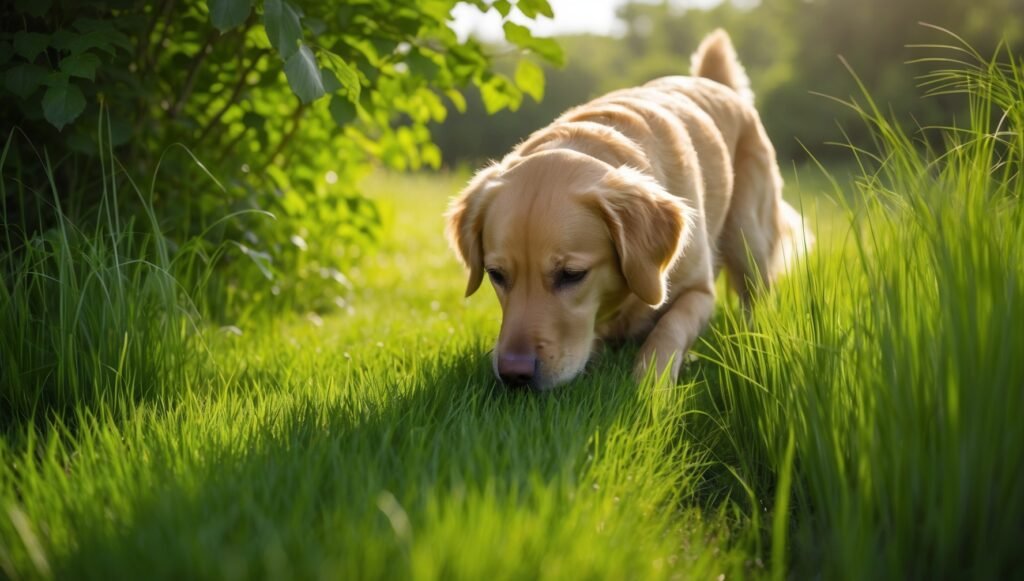
- Centipedegrass: Often called a “lazy man’s grass,” centipede is a low-maintenance, warm-season turf. It thrives in the hot, humid Southeast. Centipedegrass spreads by stolons and has bright green, bladelike foliage. It requires lots of watering, but that’s a benefit with dogs – the constant moisture dilutes urine, greatly reducing lawn burn. A key feature: Centipede is extremely low-maintenance once established. It needs minimal mowing and fertilization, and is fairly pest- and disease-resistant. The softness of centipede makes it comfortable for dogs, and its tolerance of sandy, acidic soils fits many Southern yards. On the downside, centipede grows slowly and has low foot-traffic tolerance compared to bermuda/zoysia. But for a relaxed dog owner wanting a mellow grass, it’s a good pick best grass for dogs.
- St. Augustinegrass (‘Citrablue’ St. Augustine): While St. Augustine isn’t always listed in “dog grass” articles, certain varieties are very pet-friendly – notably the Citrablue cultivar. Everglades Equipment highlights St. Augustine Citrablue as “the best grass for dogs with allergies” because it’s low-allergen. Beyond allergies, Citrablue is quite tough: it’s dense, broad-bladed, and resists wear from nails. The Everglades blog notes it’s “one of the toughest varieties of turf grass” and salt-tolerant, with low thatch and disease resistance. This means it handles dog urine well (urine has salts) and stays healthy. It also tolerates some shade more than bermuda. In Florida, dog parks often use St. Augustine because it stays lush under heavy use. So in coastal/South regions, consider Citrablue or Floratam St. Augustine as a green, allergy-friendly option best grass for dogs.
- Bahiagrass: (For completeness) Common in the deep South for pastures, bahiagrass is ultra-tough and drought tolerant. It’s coarse-textured and can be scratchy, but it survives extreme heat and traffic. Bahiagrass isn’t typically used in ornamental lawns, but in a pinch it can handle pets (though it doesn’t stay soft or uniform). Due to lack of pet-focused citations, most homeowners prefer the above warm-season grasses instead best grass for dogs.
- Buffalograss: A North-American native, buffalograss is a fine, drought-hardy turf grass used in some lawns. It tolerates heat and wear, and dogs can nibble it harmlessly (it’s non-toxic). It goes dormant in winter (brown), but self-repairs reasonably well in summer. It’s not widely sold in typical lawn blends, but if water conservation is your top goal and pets occasionally chew turf, buffalograss is an eco-friendly option. (Australian “Sir Walter Buffalo” is similar and is touted as pet-safe and self-repairing.)
In warm climates, the rule of thumb is: Bermuda and Zoysia for high-traffic, Centipede and St. Augustine for softer, low-maintenance areas. In fact, Southern lawns often mix or transition between these for year-round coverage.
Specialty Seed Mixes & “Dog-Friendly” Seed Blends
Beyond natural turf types, there are grass seed blends specifically marketed for pet owners. Many include ryegrass, fescue, and bentgrass in tough mixes. For example, “Hardwearing Grass Seed – Ideal for Children & Animals” (a UK product) contains dwarf ryegrasses and creeping red fescue, and is described as “Kids and dog friendly” and “Pet urine resistant”. Similarly, U.S. vendors (like Amazon retailers) sell grass seed mixes labeled “pet-friendly” or “hard-wearing” for heavy use best grass for dogs.
One brand, Sunday Lawn Care, offers pet-specific blends for northern lawns. Their “Pet Lawn” mix (Tall Fescue + Perennial Ryegrass) and “Pet Bare Lawn Repair” (a fescue/rye blend) are designed to resist urine and recover quickly. These blends often package the very grasses we’ve discussed. When buying, look for key phrases on the bag: “hard-wearing,” “pet-friendly,” “dog urine resistant,” etc. The ingredients should include durable species (ryegrass, fescue, bluegrass) rather than purely ornamental types best grass for dogs.
If you want a ready-made recommendation, search for brands like Nature’s Lawn & Garden or Equinox that specialize in pet-safe seed. For example, some mixes explicitly contain “scent-free grass” and non-toxic colorants to protect pups’ noses. But always check that “dog-friendly” claims align with the species in the mix best grass for dogs.
Buying Dog-Friendly Grass Seed
- Look for tough blends: Seeds with ryegrass and fescue (as above) are usually good.
- Check pet-poolad phrases: Words like “durable,” “heavy traffic,” and “urine resistant” indicate pet-suitability.
- Consider specialized retailers: Home Depot, Lowe’s, and Amazon offer grass seed labeled for pets. A simple search for “grass seed for dogs” will show products. (For example, some Amazon listings explicitly market to dog owners.)
- Apply thoroughly: Follow package rates and water well. Overseed any worn spots in fall (cool-season) or late spring (warm-season) as needed best grass for dogs.
By combining the right grass type or seed blend with good care, you can buy a lawn that stays green and intact even with pets best grass for dogs.
Grass for Special Conditions
- Poolside and Pet Areas: Chlorine and splashed saltwater from pools can harm turf. Zoysia (slow, short) and Bermuda are recommended around pools. Zoysia’s low profile and dense cover handle pool spray well, and bermuda’s resiliency endures occasional salty moisture. Both are forgiving of traffic, making them ideal for mixed dog-pool areas. By contrast, Kentucky bluegrass and centipede do poorly near pools (they don’t like chemicals or high traffic).
- Shade: If your dog plays in a mostly shady yard, choose a shade-tolerant grass. Tall fescue (among cool-season) and St. Augustine ‘Citrablue’ (warm-season) are better in part shade. Zoysia tolerates light shade; bermuda and Kentucky need full sun. In heavy shade, many owners underplant with shade-loving groundcovers (e.g. mondo grass, liriope) or accept a patchier lawn.
- Allergies: Some dogs (or family members) get hay fever from grass pollen. In those cases, consider low-pollen turf. Everglades Equipment notes that St. Augustine ‘Citrablue’ is “low in allergenicity”, making it a great choice for allergy sufferers. Fine fescues also produce relatively little pollen. Artificial grass is another hypoallergenic route. Notably, synthetic turf is hypoallergenic for dogs – it won’t trigger grass allergies. (One SodPods FAQ even points out that artificial turf can be good for allergic dogs.)
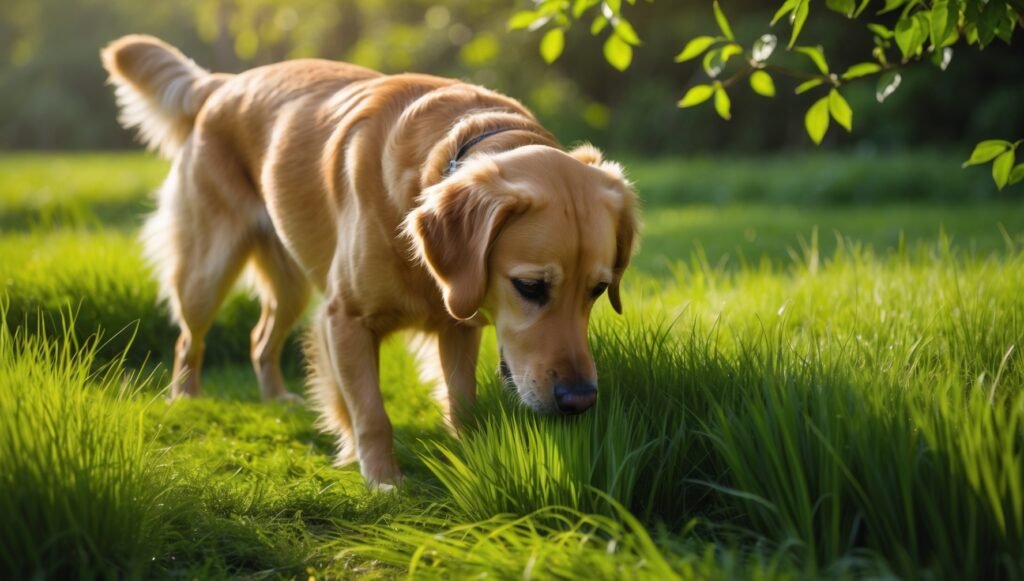
Maintaining a Dog-Friendly Lawn
Choosing the right grass is step one; maintenance is crucial too. Even the toughest turf needs care if it’s home to dogs. Follow these tips to keep your lawn healthy:
- Regular Watering: Keep grass strong and dilute pet urine. Especially in summer or drought, water deeply (about 1–1.5 inches per week). LawnStarter advises watering immediately on urine spots to neutralize nitrogen. For warm-season grasses like bermuda or zoysia, proper irrigation helps them recover faster from wear best grass for dogs.
- Mow High: A taller cut can help shade the soil and strengthen roots. Roughly 2–3 inches is ideal for most dog-friendly grasses (see tags above). Mowing too low stresses the turf, making it more vulnerable to pet damage. The SodPods guide suggests that keeping grass slightly taller improves resilience.
- Fertilize Properly: Use a moderate fertilizer schedule – too much nitrogen can make urine burn worse. Follow product directions and consider using a slow-release feed. Overseed when needed to fill gaps from play or potty spots. Pennington recommends overseeding tall fescue or rye in fall for northern lawns best grass for dogs.
- Designated Potty Spot: Train your dog to use a specific area (like a corner of the yard) or install a doggie “grass pad.” Concentrating toilet use helps localize damage. SodPods suggests designating a potty zone and even installing artificial grass pads if needed.
- Dilute & Repair: If you see yellow spots, flush them with water promptly. After that, reseed or plug those areas with a patching mix. According to SodPods, pulling up dead grass and sowing fresh seed or plugs will quickly restore the lawn. Products like NutriPod or similar grass fertilizers can accelerate recovery best grass for dogs.
- Avoid Harsh Chemicals: Use pet-safe herbicides/fungicides if necessary, or hand-pull weeds. Dogs love to chew on grass blades, so minimize toxins best grass for dogs.
- Shade & Drainage: If an area stays muddy (from runoff or dog water bowls), improve drainage or add mulch to paths. Mud hurts grass more than urine.
- Lawn Games: Provide a well-worn dog run or mulch play area if possible, so not every part of the yard is equally trafficked. This gives grass time to heal in the rest of the lawn.
With these steps, even a pet-heavy lawn can stay green and thick best grass for dogs.
FAQs
Which grass type is best for dogs and around pools?
Answer: For combined dog/pool areas, Zoysia grass and Bermudagrass are top choices. Both are low-growing and durable. Zoysia’s slow, dense turf tolerates light shade and resists chemical splash, while bermuda’s aggressive growth recovers from traffic quickly. Kentucky bluegrass and fine fescues fare poorly at pool edges (they dislike chlorine and heavy traffic).
What is the best grass for dog urine spots?
Answer: No grass is completely immune, but some resist urine better. Perennial ryegrass and tall fescue are often cited as the most urine-resistant cool-season grasses. They absorb moisture and tolerate the nitrogen loads. In warm climates, bermuda and zoysia handle urine well because their dense cover (and watering needs) dilute the effect. Eventually, some yellowing may occur, so dilute spots with water and reseed if necessary best grass for dogs.
Is artificial grass good for dogs?
Answer: Yes, artificial turf is a popular dog-friendly option. It is easy to clean (just hose off), always green, and hypoallergenic, so dogs won’t pick up grass pollen or fleas on it. Modern pet-grade turfs often have built-in drainage for urine. The main caution is heat: synthetic grass can become very hot in summer sun, which can bother dogs’ paws. If you go synthetic, choose a lighter color that reflects heat and rinse it on hot days best grass for dogs.
What about pet-friendly grass seed?
Answer: Look for seeds labeled “pet-friendly,” “hard-wearing,” or “heavy traffic.” These usually contain a mix of ryegrass, fescue, and bluegrass, the tough species. For example, blends like Hardwearing Grass Seed – Children & Animals (a UK mix) contain ryegrass and fescue and are marketed as “dog friendly” and “pet urine resistant”. In the US, brands like Sunday Lawn Care or Nature’s Lawn sell “Pet Lawn” or “Dog & Kid” mixes (tall fescue + ryegrass) specifically for lawns with pets. Apply these seeds generously and keep moist for faster germination best grass for dogs.
How do I revive grass after dog pee damage?
Answer: The best immediate fix is watering: flush the area right after your dog goes to dilute urine. For existing dead spots, remove the dead grass and loosen the soil. Seed or plant a grass plug (of the same type) into the patch best grass for dogs. SodPods recommends adding compost or a little fertilizer to enrich the spot and using grass plugs to restore growth. Keep the repaired spot watered until fully grown. For larger areas, an overseeding of perennial rye or tall fescue (for cool-season) or bermuda/centipede (warm-season) will thicken the lawn again. Remember, no grass is completely pee-proof – dilution and quick repair are the keys best grass for dogs.
Which grass is best if my dog (or I) have allergies?
Answer: For allergy sufferers, St. Augustine ‘Citrablue’ comes highly recommended. It produces very little pollen compared to other lawns, making it “the best grass for dogs with allergies”. Other low-pollen options include certain fine fescues or even mixing in clover (though that’s unconventional). As mentioned, artificial turf is inherently hypoallergenic (no pollen, no weeds). If real grass must be used, Citrablue St. Augustine in warm regions or fine-blade Kentucky bluegrass in cool regions are your safest bets.
Can dogs safely eat grass from the lawn?
Answer: Dogs often nibble on grass. Generally, turf grasses (like those listed above) are non-toxic to dogs. The Everglades blog even notes that best grass for dogs St. Augustine grass is “safe for dogs and other pets” and is used in dog parks. Just ensure your lawn has not been treated with toxic fertilizers or pesticides. If excessive grazing is a concern, consider planting a small patch of pet-safe grass (like wheatgrass) they can munch on without damaging the lawn best grass for dogs.
Summary
Building a pet-friendly lawn means selecting grass that balances toughness with comfort. Cool-season hybrids (Kentucky bluegrass, tall fescue, perennial ryegrass) and warm-season classics (bermuda, zoysia, centipede, St. Augustine) top the charts for dog owners. Consider your climate: use cool-season grasses up north, and warm-season grasses in the South. Artificial turf is another viable choice, especially for allergic pets. Always follow up selection with good care: water generously, train your dog’s bathroom spot, and repair damage quickly. With the right grass (and maintenance), you can have a lush lawn and happy dogs.
Did you find these tips helpful? Drop your experiences or questions in the comments below. Share this guide with fellow dog lovers so they can create a green, dog-friendly yard too best grass for dogs.
Sources: Authoritative lawn-care and pet-expert articles have been used to compile these recommendations.

